Prepare your house for an inspection
What will a home inspector be looking at and how you can prepare for a home inspection? The below listing may be helpful in preparing for a home inspection. Many of these items can be done with little or no cost and many are regular maintenance items for a home.
- Remove grade or mulch from contact with siding. Six (6) or more inches of clearance is preferred.
- Clean out dirty gutters or debris from the roof.
- Divert all water away from the house; i.e. downspouts, sump pump, condensation drains, etc. Grade should slope away from the structure. Clean out basement entry drains.
- Trim trees, roots and bushes back from the foundation, roof, siding and chimney.
- Paint all weathered exterior wood and caulk around the trim, chimney, windows and doors.
- Seal asphalt driveways, if cracking.
- Seal or point up masonry chimney caps. Install metal fluecap.
- Clean or replace HVAC filter. Clean dirty air returns and plenum.
- Point up any failing mortar joints in brick or block.
- Test all smoke detectors to ensure they are in safe working condition.
- Update attic ventilation if none is present.
- Have the chimney, fireplace or woodstove cleaned and provide the buyer with a copy of the cleaning record.
- Seal masonry walls in the basement.
- Don’t do quick cheap repairs. You may raise questions that will unfairly cause great concern to buyers and inspectors.
- Ensure that all doors and windows are in proper operating condition, including repairing or replacing any cracked window panes.
- Ensure that all plumbing fixtures (toilet, tub, shower, and sinks) are in proper working conditions. Check for and fix any leaks. Caulk around fixtures if necessary.
- Install GFCI receptacles near all water sources. Test all present GFCI receptacles for proper operation.
- Check sump pump for proper operation.
- Replace any burned out light bulbs.
- Remove rotting wood and/or firewood from contact with the house.
- Ensure that proper grading is followed under a deck.
- Install proper vapor barrier in crawlspaces.
- Caulk all exterior wall penetrations.
- Check to ensure that the crawlspace is dry and install a proper vapor barrier if necessary. Remove any visible moisture from a crawlspace. Moisture levels in wood should be below 18% to deter rot and mildew.
- Check that bath vents are properly vented and in working condition.
- Remove paints, solvents, gas, etc., from crawlspace, basement, attic, porch, etc.
- If windows are at or below grade, install window wells and covers.
- Have clear access to attic, crawlspace, heating system, garage and other areas that will need to be inspected.
- If the house is vacant, make sure that all utilities are turned on, including water, electric, water heater, furnace, air condition and breaks in the main panel.
What Not to Expect
Home Inspectors do not do any destructive testing, nor do they have x-ray vision. Consumers should not expect their reports to include the condition of every nail, wire or pipe in the home. The Home Inspector is primarily concerned with pointing out adverse conditions and/or safety-related concerns, rather than small or cosmetic items, which are considered readily apparent to the buyers.
A home inspection is not a code compliance inspection and a home inspector will not inspect inaccessible areas of the home. For a detailed outline of what exactly what a NACHI inspector will inspect, please see the NACHI Standards of Practice and Code of Ethics. While the Standards provide a minimum guideline for conducting a home inspection, the NACHI Code of Ethics sets a standard of professional behavior for members.
In addition, the homebuyer should not expect the inspector’s report to serve as a guarantee that the home’s components will never fail or need repair at some point in the future. No house is perfect – they all need regular maintenance and repair.
